|
Off once again on our annual highpointing pilgrimage, this time through the mid-Atlantic states. As usual, we left St. Louis after work on Friday. We drove as far as Louisville and settled down for the night. |

|
|
Saturday, 19 August 2000 |
|
Sunday, 20 August 2000 |
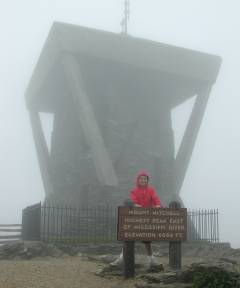 |
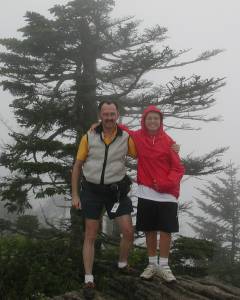 |
|
No sooner had we driven out of Asheville, NC, and headed up the Blue Ridge Parkway than we ran into increasing cloud cover over the Parkway. We had to slow to a crawl, taking at least twice as long as we had counted on to drive up to the Mt. Mitchell turnoff. After what seemed an interminable trip feeling our way along the Parkway, we arrived safely at the Mt. Mitchell state park and drove up to the summit parking lot. From there, it is a short stroll to the observation tower, sign, and USGS benchmark which mark the North Carolina highpoint at 35deg 45.881' N, 82deg 15.914' W. The benchmark is set into the rocks where Nathan and I are standing in the photo above. Needless to say, the "view" from the top of the observation tower was less than spectacular on this particular day. Steve Eckert had better weather. |
|
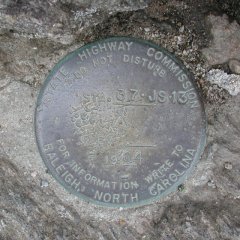 |
 |
|
As we ate lunch at the park restaurant, we noticed the spider webs hanging from the overhang above the windows festooned with pearls of cloud condensation. Since the clouds gave no hint of parting, we bailed out from our plan of driving up the Blue Ridge Parkway into Virginia and opted for the lower-altitude interstate highway. We drove up to my cousin's house in Radford, VA, for the night. |
|
|
Monday, 21 August 2000 |
|
Tuesday, August 22, 2000 |
|
Wednesday, August 23, 2000 |
|
Thursday, August 24, 2000 |
|
Friday - Sunday, August 25 - 27, 2000 |
|
Homeward bound, seven new highpoints "in the bag." We took our time, spending part of Friday at the NFL Hall of Fame in Canton, OH, and most of Saturday at the Air Force Museum in Dayton, OH. The Air Force Museum has an unmatched collection of aircraft from the beginnings of flight up to the present. Anyone who is any sort of aircraft buff could easily spend a couple of days there. Arriving home about mid-afternoon on Sunday, the trip totalled almost exactly 3,000 miles. |
Black Mountain, the Kentucky High Point
back
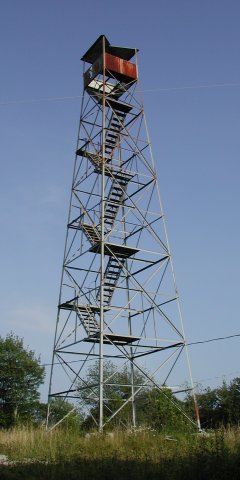 |
The fire tower has obviously seen better days and is missing most of its floor and one of its roof panels. The lower flights of stairs have been removed to prevent anyone from climbing it in its deteriorated state. |
 |
|
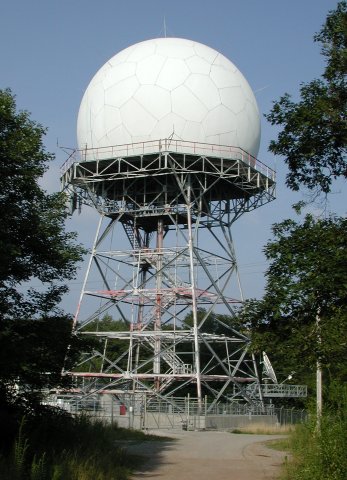 About a quarter-mile from the high point, along the approach road, is this impressive FAA long-range radar facility. |
|
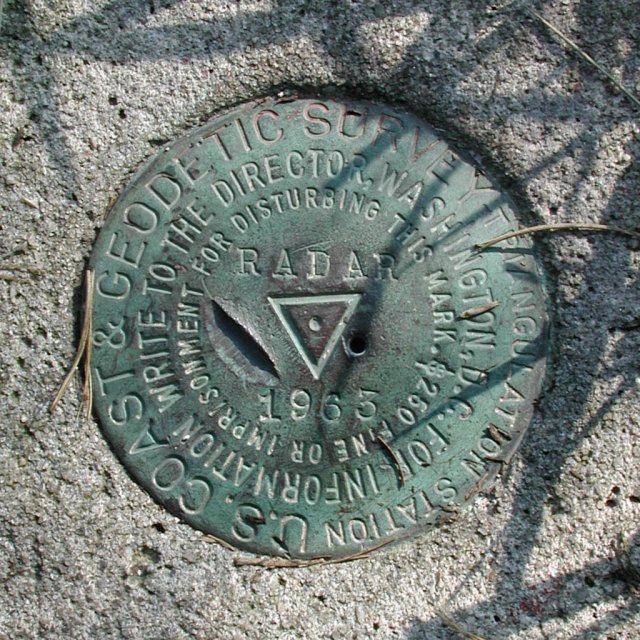 |
|
|
This benchmark is located under the abandoned and decrepit fire lookout tower atop Black Mountain. |
|
Mt. Mitchell, the North Carolina High Point
back
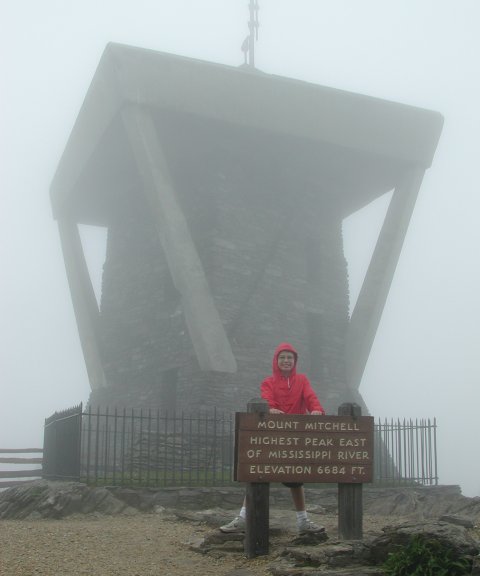 |
Mt. Mitchell is topped by an impressive stone observation tower which would command a dramatic view of the surrounding area on a clear day. The high point is marked with a sign denoting its status as the highest point east of the Mississippi. Steve Eckert had better weather. |
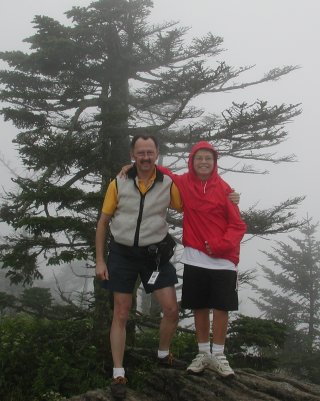 |
|
|
Mt. Mitchell is named after the Rev. Elisha Mitchell, who died exploring this mountain. |
|
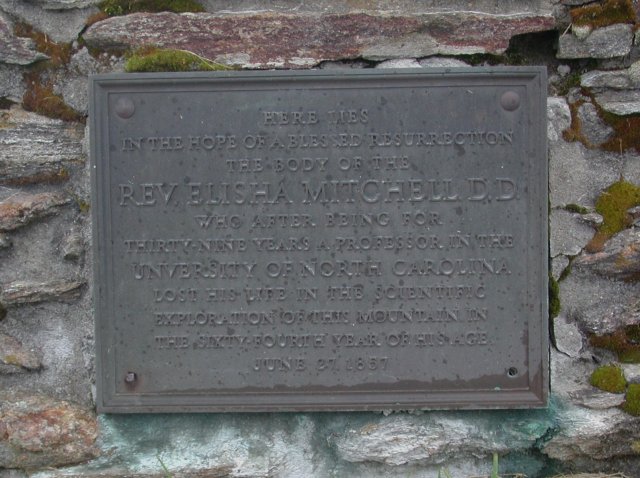 |
|
|
The high point, proper, is amid a cluster of rocks on the summit, and is marked with this USGS benchmark. |
|
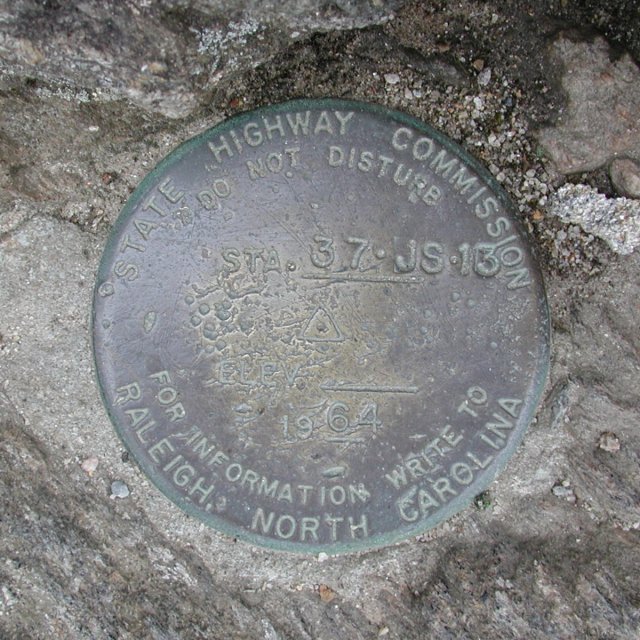 |
|
|
The state park which surrounds Mt. Mitchell has a number of trails and other facilities, including a gift shop near the summit and a restaurant a short distance down the road toward the Blue Ridge Parkway. Our visit coincided nicely with lunch time, so we ate at the park restaurant, where we spotted these spider webs hanging from the overhang above the windows. Cloud droplets had coalesced onto the spider webs, creating a jeweled appearance. |
|
 |
|
Mt. Rogers, the Virginia High Point
back
 |
|
One of the friendly Wilburn Ridge wild ponies near the Massie Gap trailhead. |
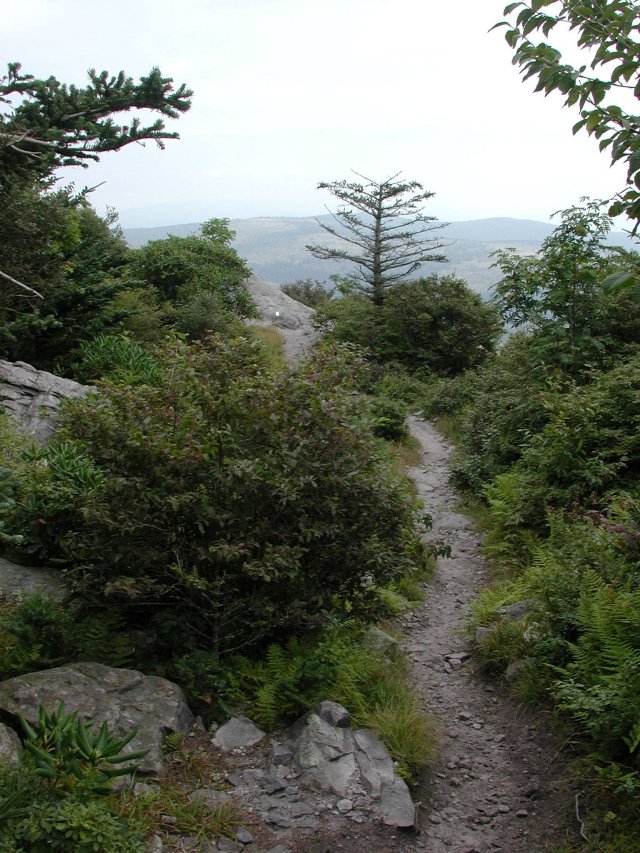 |
|
Looking back down the trail from one of the ridges you cross on the way up to Mt. Rogers. |
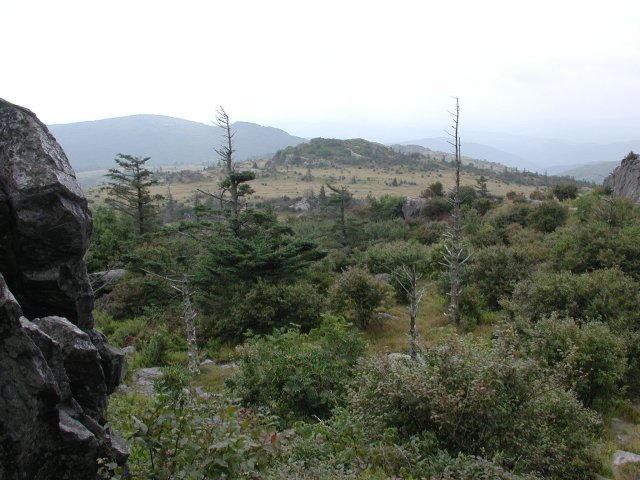 |
|
The vistas from along the trail are expansive, with a mixture of rocks, rhododendrons, and evergreens. This would certainly be a colorful hike in the springtime. |
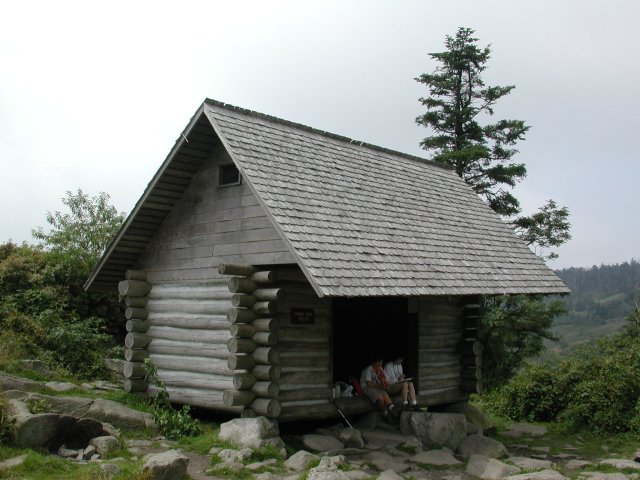 |
|
Part of the trail uses the Appalachian Trail. This shelter along the AT is about a mile from the summit of Mt. Rogers and makes a perfect spot to stop for lunch. |
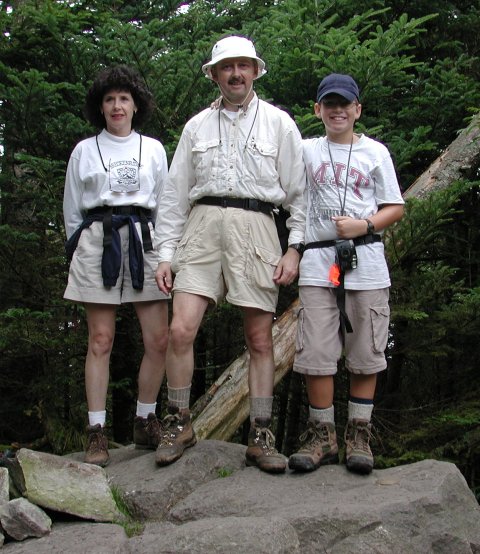 |
|
The group of happy highpointers atop Mt. Rogers. The USGS benchmark is visible set into the rocks at the lower right corner of this image. Nathan's MIT T-shirt is appropriate because William Barton Rogers, after whom Mt. Rogers was named, founded the Massachusetts Institute of Technology in 1861. |
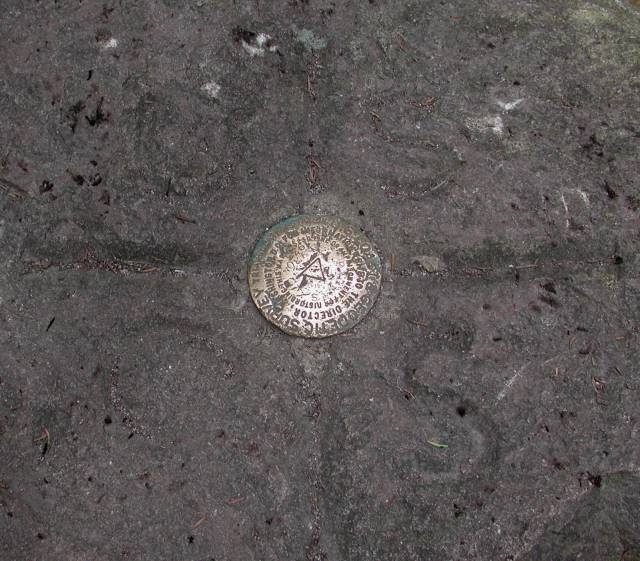 |
|
Barely visible in this shot is the faint engraving of "USGS" in the rock surrounding the benchmark. |
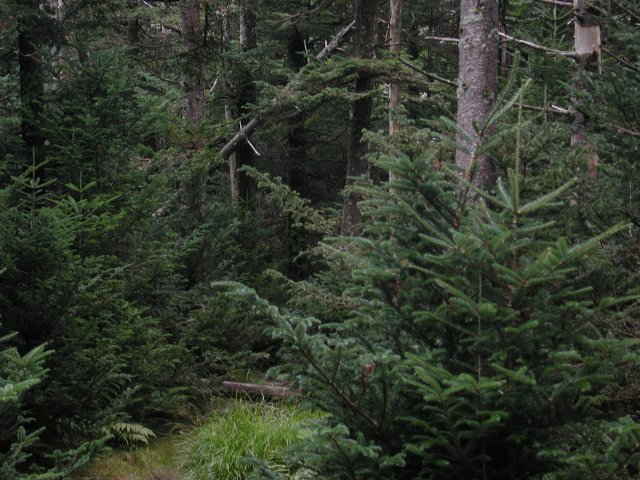 |
|
Although the views from the trail leading up to Mt. Rogers are expansive, the view from the summit is merely brushy. |
Spruce Knob, the West Virginia High Point
back
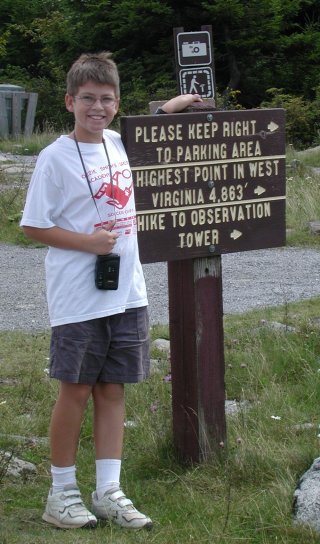 |
The West Virginia highpoint is well developed, with a good gravel parking lot, latrines, and signs pointing you to the path to the highpoint and its stone observation tower. |
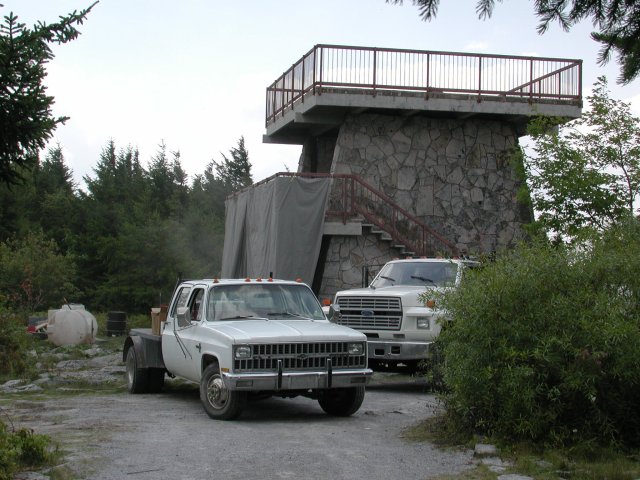 |
|
|
The day we were there, the tower was being sandblasted and cleaned up, so the path was blocked a few yards short of the base of the tower. |
|
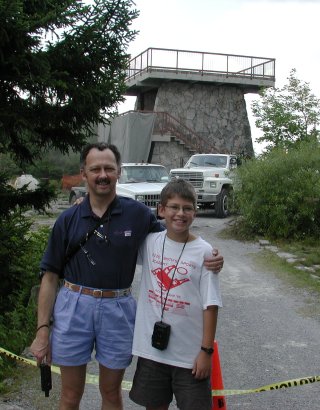 |
|
|
After the obligatory summit photo, we found the interesting wildflower below. Almost looks like a miniature Christmas tree, doesn't it? |
|
 |
|
Backbone Mountain, the Maryland High Point
back
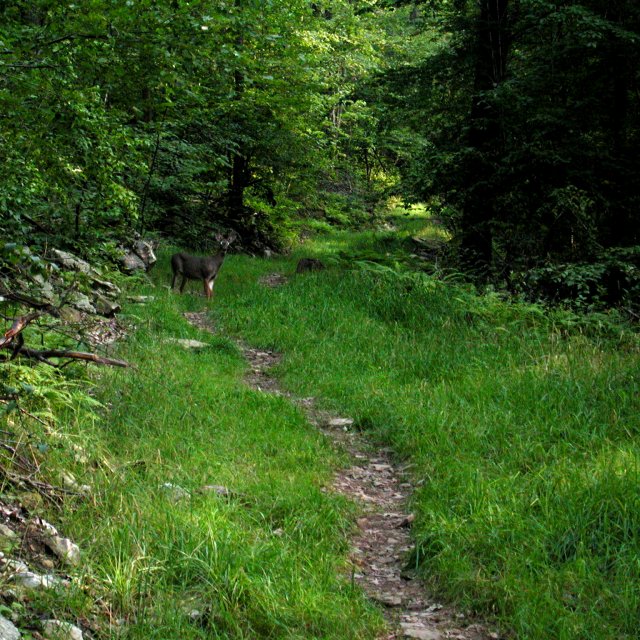 |
|
|
The trail up to the Hoye Crest of Backbone Mountain is well maintained and home to wildlife. This buck, a doe, and two fawns darted off into the woods as we approached. |
|
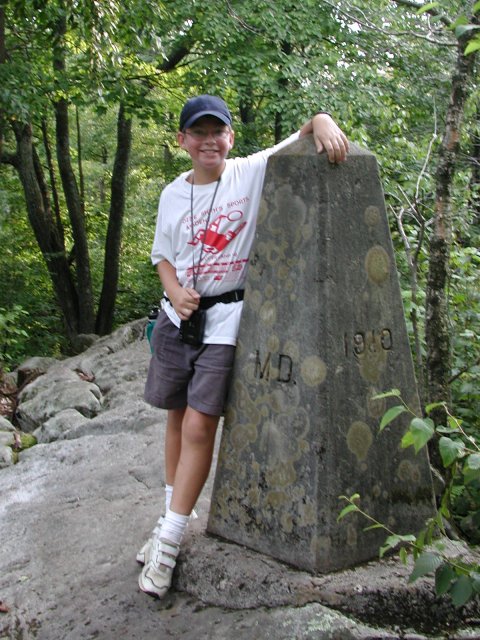 |
|
|
Nathan posed alternately on the Maryland and West Virginia sides of the state line, marked by this stone obelisk only about 100 yards from the Maryland highpoint. The trail divides and gives hikers the option of seeing this marker and scrambling over some rocky outcrops, or taking the "low road" and walking along a smoother trail to the highpoint, proper. |
|
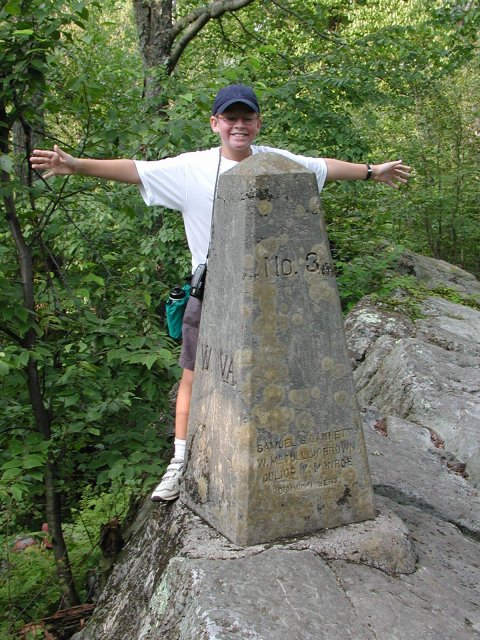 |
|
 |
|
|
We found this butterfly, fresh out of the cocoon, under the picnic table at the highpoint. After signing the summit log, which is kept in the mailbox on the highpoint marker post, we prevailed upon another highpointer to take our photo. The panoramic photo below links to a VR "movie" of the panorama. It covers only about 120 degrees, the scope of the clearing, but provides more detail than is visible in the single photo. |
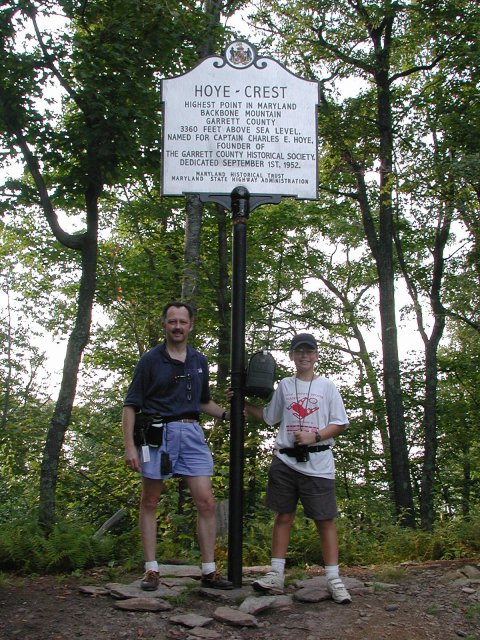 |
|
Controls for the VR movie are: Shift zooms in. Ctrl zooms out. Holding the left mouse button and moving right, left, up, or down will pan the viewing window in that direction. Because of the vagueries of VR movies, the 120 degree panorama is joined into a full cylinder, so you can spin all the way around even though the original image is not a full 360 degrees. The file is about 140k, so base your interest on your patience downloading files of that size. |
|
 |
|
Mt. Davis, the Pennsylvania High Point
back
|
The summit boulder atop Mt. Davis makes it a bit difficult for a group to stand "officially" atop Pennsylvania's highest point. Instead, we opted for standing next to the boulder. Nathan scrambled up a moment later so he could claim to have actually stood on top of Pennsylvania. (Well, so did I, but my excuse was so I could take a photo of the benchmark which is under Nathan's hand in this photo.) |
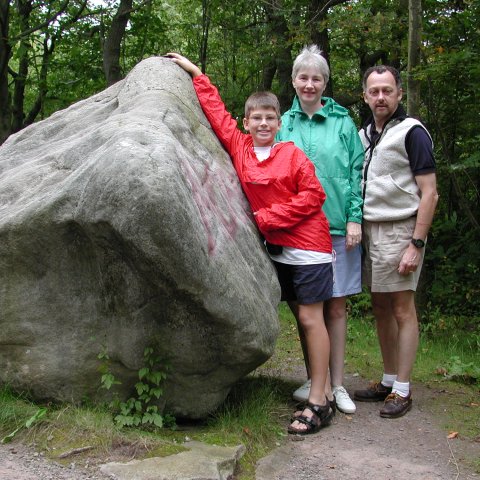 |
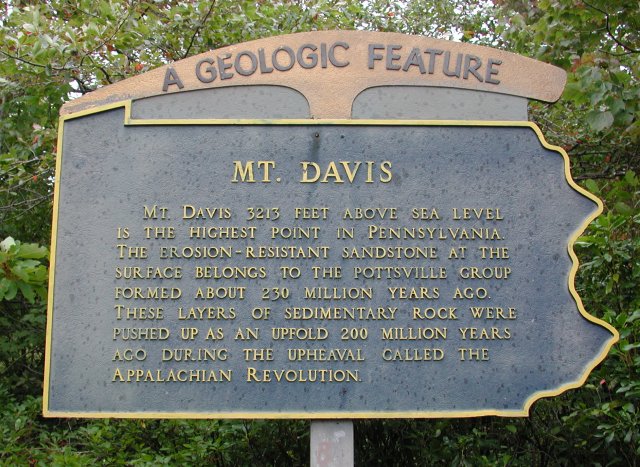 |
|
|
The plaque documenting Mt. Davis as Pennsylvania's highpoint is a few yards from the benchmark and the observation tower, which is visible above the trees in the background. |
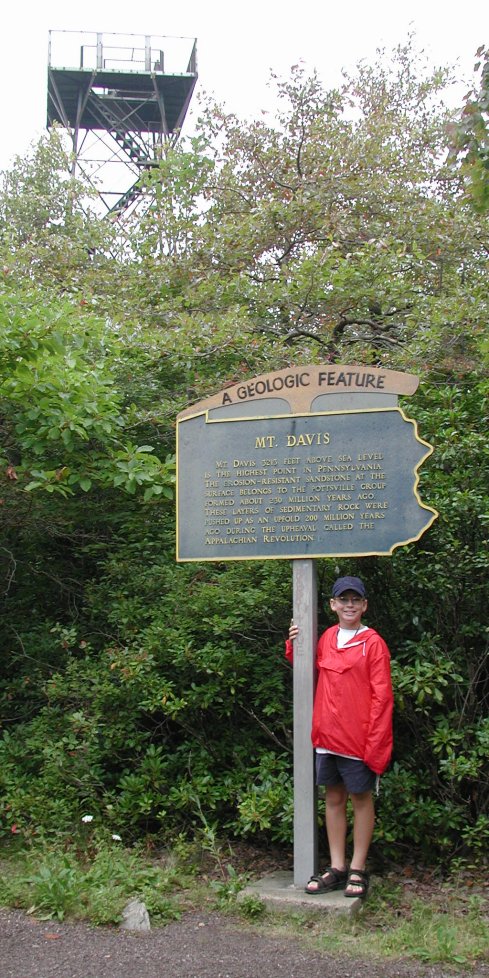 |
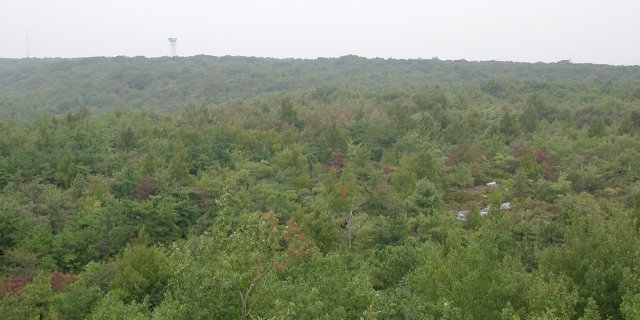 |
|
|
Nathan and I climbed the tower in the drizzle and stayed just long enough to take one photo illustrating the woodsy view from the top. The USGS benchmark atop the summit boulder has obviously been considerably abused over the years, but it is still securely attached to the rock. |
|
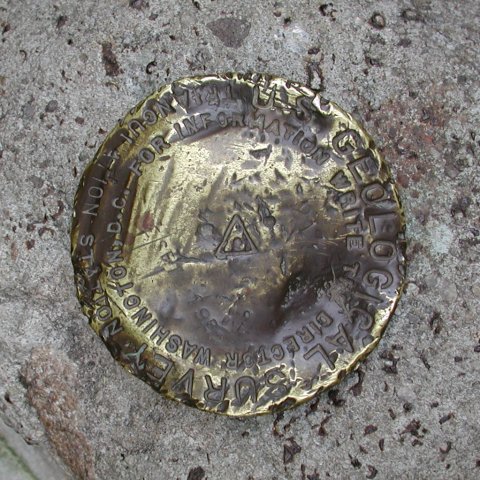 |
|
Tower Hill, aka the Ebright Azimuth, the Delaware High Point
back
|
Tower Hill takes its name from this tower. It would appear that it might once have been a fire lookout tower, but it now fairly bristles with microwave relay and cellular telephone antennae. |
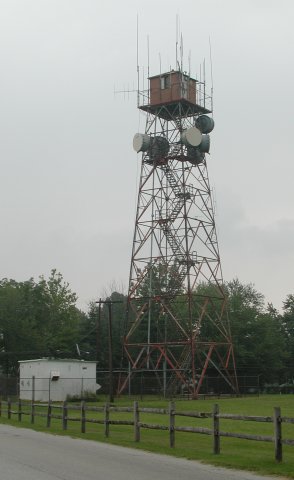 |
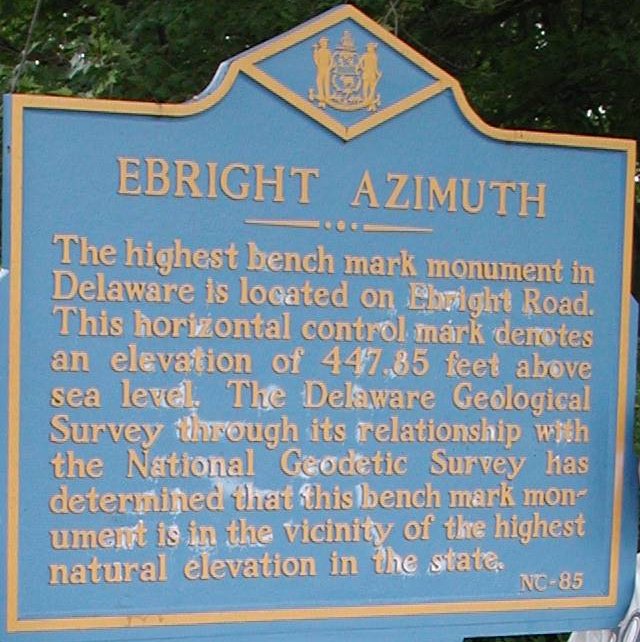 |
|
|
The plaque across Ebright Road from the USGS benchmark is a bit vague, noting only that the "Ebright Azimuth" is in the vicinity of the highest point in Delaware. The benchmark is set between the curb and the sidewalk, and is actually about six inches below current ground level. It takes a bit of careful scouting to find it, especially if the grass hasn't been cut lately. On a snowy day, you would need a metal detector and a shovel to uncover it! |
|
|
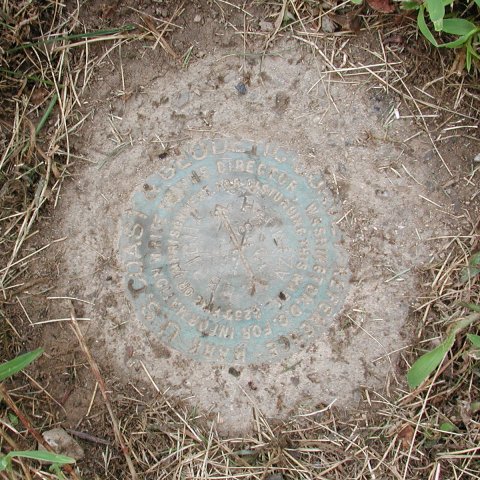 |
|
|
Our "summit photos" were taken at the plaque, across the street from the benchmark. |
|
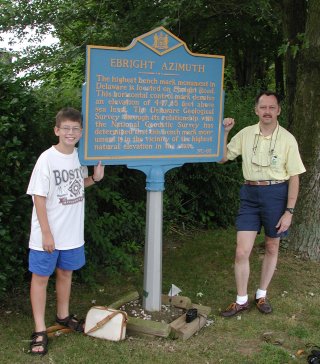 |
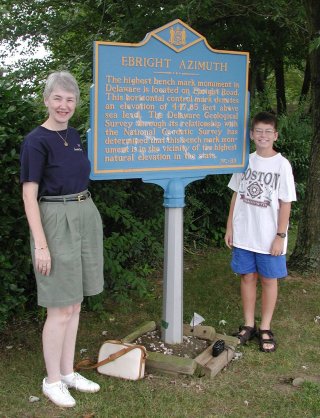 |
|
Now for the controversy! Look at the topo map fragment below. As you look at the area marked "Mobile Home Park" to the northwest of Ebright Road, you will see an oval heavy contour line to the south of the main street into the park, which crosses the second and third side streets off to the left of the main road. If you now look closely at the other surrounding contours, you will note that there is a 10-foot contour interval, and that the previous heavy contour "downhill" is at 400 feet. That means that the next contour is 450 feet, or two feet higher than the published altitude of the Delaware highpoint (448'). Very interesting! A visual inspection shows a very gentle uphill trend from Ebright Road as you go along the road into the mobile home park, and it appears that the side streets also go uphill a bit as they leave the main road. The ultimate question is, of course, "is that 450-foot contour natural or manmade?" If it is natural, then the USGS benchmark is not at the official highpoint of the state, but is merely a convenient nearby marker. If the entire area has been graded and landscaped in the process of clearing it and creating the mobile home park and streets, the 450-foot contour may be entirely man-made and thus does not exceed the natural elevation of the point marked by the benchmark. Perhaps the Highpointers Club could get permission to do some soil cores throughout the area and attempt to determine if the 450-foot contour is natural or man-made, and settle the issue. Or, the USGS benchmark may remain the "traditional" highpoint and continue to be recognized by the club as the official goal for highpointers. Anyone wishing to cover all their bases is certainly capable of reaching any and all of the "high ground" with a casual stroll along the mobile home park streets. |
|
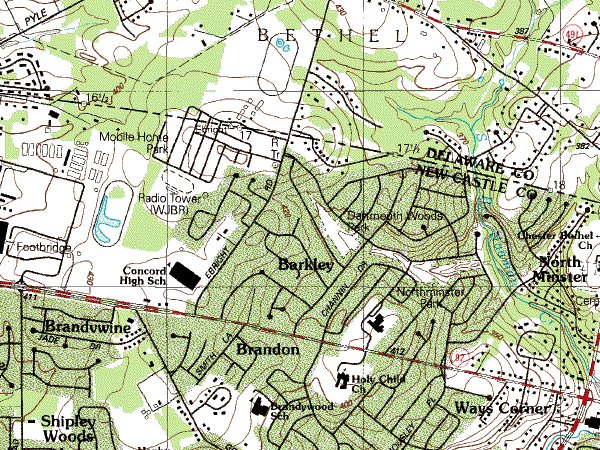 |
|
 |
Zumwalt mentions in his book that there is a boulder at a point where the elevation is 451', and this is the largest rock around the area of the 450-foot contour. Of course, with its nice white paint job, it is impossible to tell if it is a natural feature, or trucked in from elsewhere. (I would vote for the latter, since this does not seem to be a very rocky area.) The other views below show the rise along the main street into the mobile home park, and the view from the "main drag" into two of the side streets. Proof of which point in any of these is actually the highest is left as an exercise for the reader. |
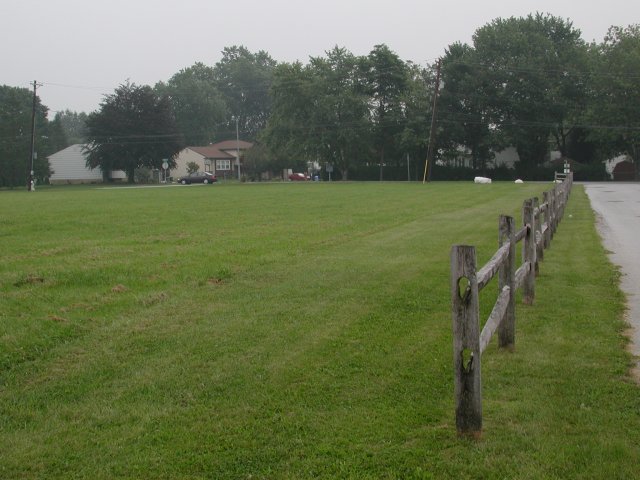 |
|
 |
|
 |
|